Evgeniy Scherbina / Профиль
- Информация
|
10+ лет
опыт работы
|
28
продуктов
|
607
демо-версий
|
|
0
работ
|
0
сигналов
|
0
подписчиков
|
The new approach uses days and does not use weeks and months to analyze the market. So it should react much quicker to the changing environment. And help avoid long-running drawdowns. And of course it should trade more actively.
It has been mostly buy positions for Gold for many weeks. I guess it will (because it should) change with the new update this week.
I already had this picture before. I like it that much.

If you have many open trades and you do not want QP to close them all, you may want to change the magic. Remember: it should be a number different by 2 digits from the current number. It still uses 2 strategies, so it uses 2 magics: magic2 = magic1 + 1.
Earlier this year, I thought of adding different supporting symbols, like Oil, Stock indices and smth else. I think this idea can be implemented in QuantumPip version 2.4. I am testing it right now.
Come on! Let's grab all the profit as soon as it shows up!

Below is the comparison picture. The current 2.2 version has not managed it well enough in the last month. The newest 2.3 version, that I am going to publish over the weekend, has a much better result with the Reliable risk. Of course, it is a test with the unknown, future data for the 2.3 version.
I have reduced the complexity of the networks. They say if a simple model performs as well or better as a complex model, you should use the simple model. This is what I am going to do.
Some uses have experienced bugs due to insufficient data. It will all be gone.
There will be one supporting symbol - XAUUSD.
It will be a choppier trading. So there will more trades and more signal changes. It is better because it should help avoid long-range traps as it has happened with USDJPY this summer.
Of course, it will work as usual with the existing trades. However, I guess most trades will be closed by the newer version. So you may want to change the magic. Also, the newer version will have a new comment "qpip" to replace the current comment "qp".

Советник Neural Transformer - это полностью автоматическая стратегия, которая готова для торговли на дневном таймфрейме 2 символов: GBPUSD и USDCAD. Помимо этого, вы можете самостоятельно выполнить обучение нейронной сети для любого таймфрейма любого символа. Советник автоматически применяет файлы нейронной сети, сохраненные после обучения. Благодаря советнику Neural Transformer обучение нейронных сетей для Форекса становится простым и увлекательным занятием! В настоящее время я предлагаю один
Here comes the name for the new product! Boom-boom tram-pam... "Neural Transformer"!


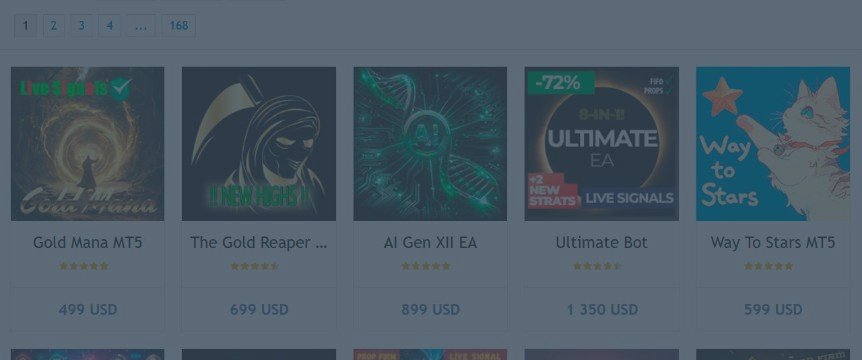
What it means is that USD should let it go. AUDUSD, EURUSD, GBPUSD may instantly go upwards, while USDCAD, USDCHF, USDJPY will head downwards.
The questions is: Will this move in currencies take place after the conference on July 31st or later in September?
My answer is: It will happen this Wednesday. I am going to remove all positions favoring USD. And I recommend doing so to you.
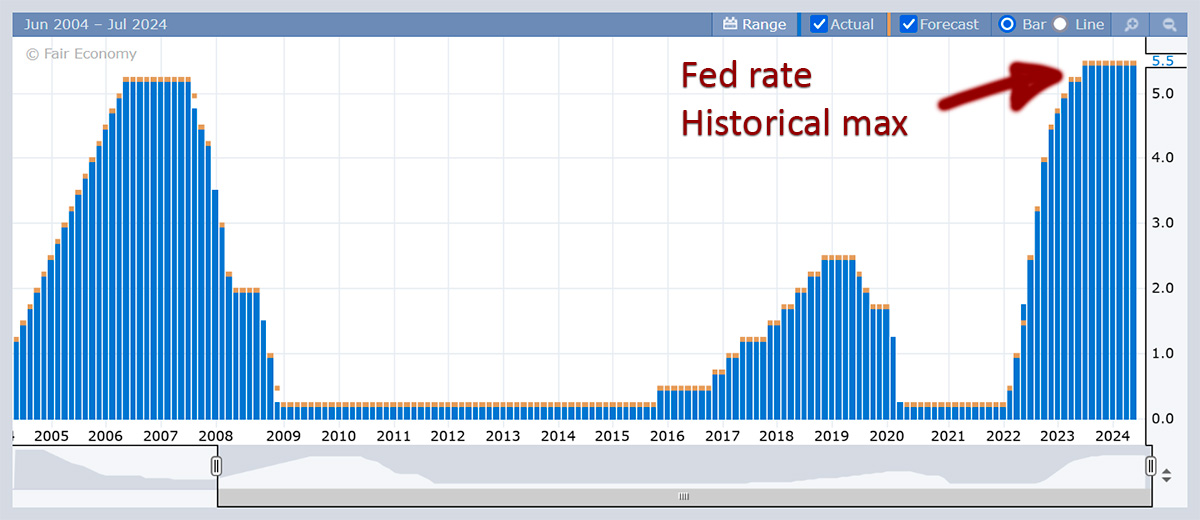
My major symbols are: AUDCAD, AUD, EUR, GBPCHF, GBP, CAD, CHF, JPY, and SEK. While the supporting symbols are: Oil, Dixie, Dax, Ftse, and Gold. Yes, you got it right! I have finally incorporated stock indices into Forex trading. All of which is available with any broker, because the rare and valuable staff is downloaded from Yahoo Finance.
What we see in this chart, is that Oil, Dixie, Dax and Gold are mostly winning. The one loser is Ftse. Oil lost 2 major symbols in the test period Jan-May 2024, while Dixie lost only one major symbol. But Dixie has the highest drawdown of 10% on SEK, together with Ftse. The drawdowns are not shown in this chart, but surely it is not only about how tall the columns are.
I think I will put it all together in one strategy, including the losing Ftse, so that everyone knows what an amazing and extensive testing has been done to achieve these results. While Oil should be the preferred choice, the other options will add confidence to it.
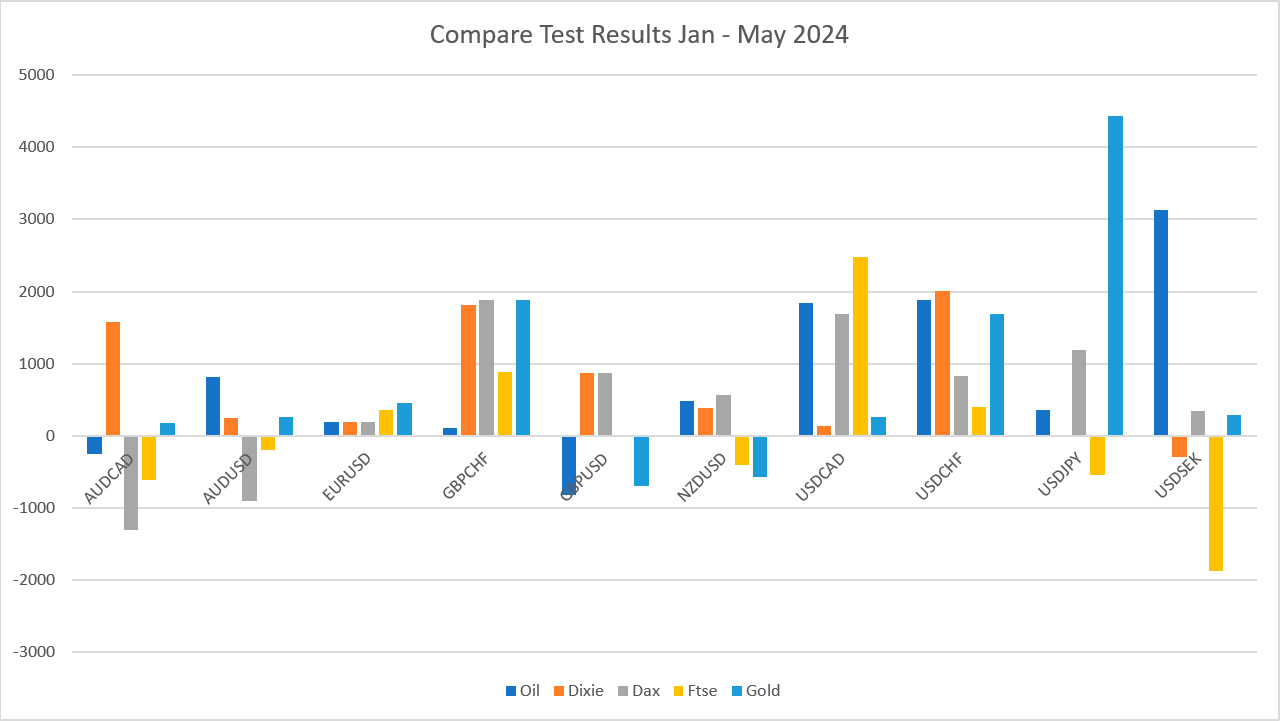
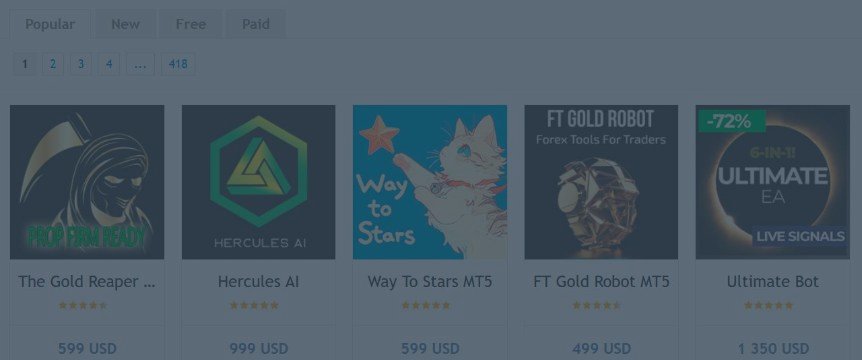
It uses the American Dollar Index, or "Dixie", as a supporting symbol.
LuminaFX check it out here: https://www.mql5.com/en/market/product/114681
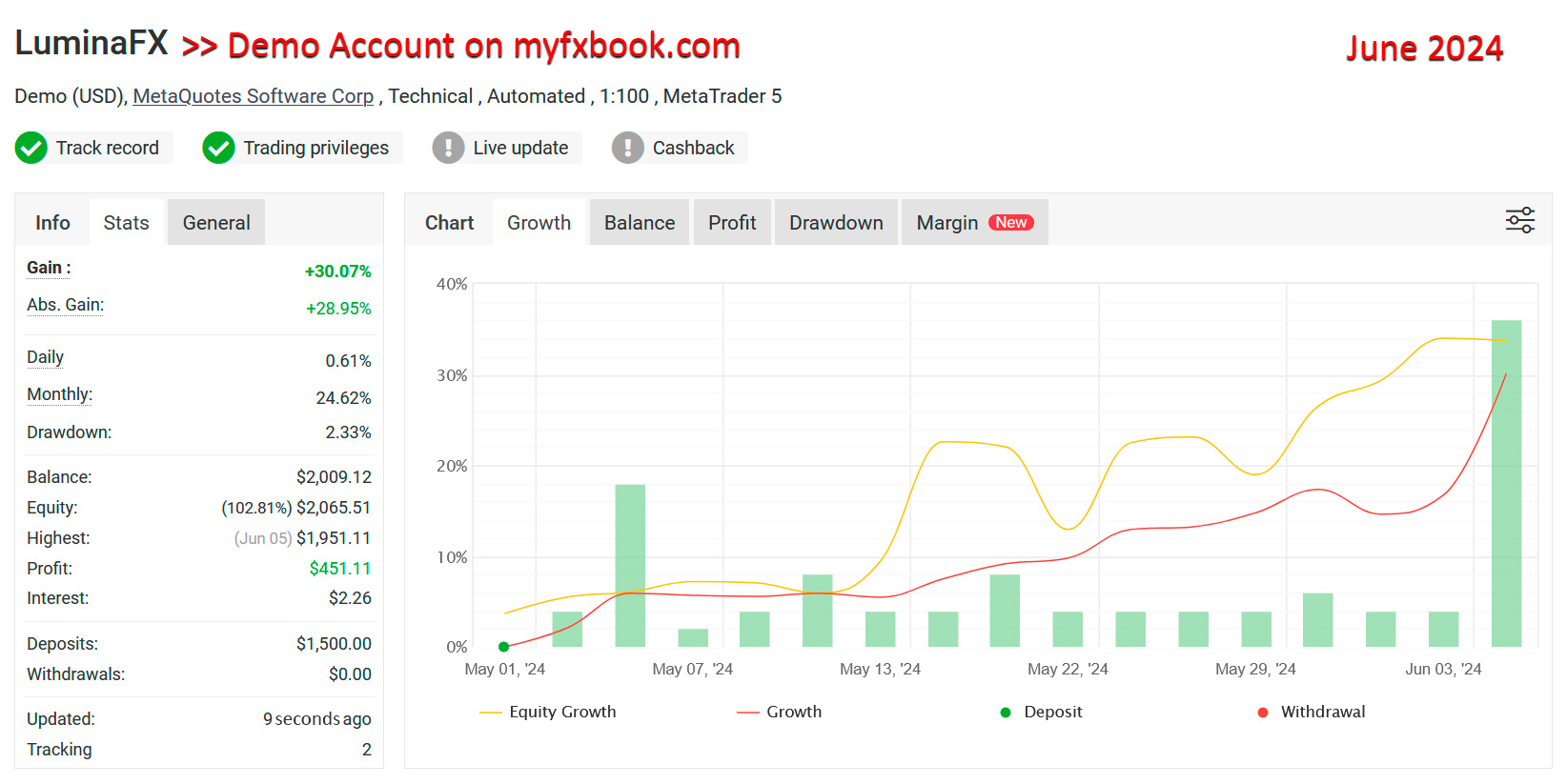
LuminaFX - полностью автоматический советник, который торгует 10 символов с одного графика: AUDCAD, AUDUSD, EURUSD, GBPCHF, GBPUSD, NZDUSD, USDCAD, USDCHF, USDJPY и USDSEK. Советник реализует популярный вариант рекуррентной нейронной модели. В качестве входов для нейронной модели используются значения Индекса американского доллара DXY или "Дикси". Убедитесь, что в вашем терминале есть 6 символов, составляющие Индекс американского доллара: EURUSD, USDJPY, GBPUSD, USDCAD, USDSEK и USDCHF. Иначе
а на RannForex он как USDX - наверное надо передавать имя символа советнику в параметрах?
Пошёл тестить на IC Markets ;)
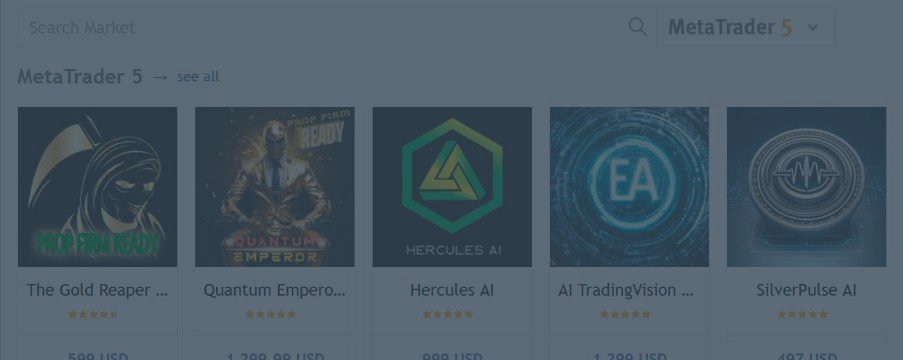
Likewise, right now I am seeing that it is QuantumPip slowing down, while LuminaFX is really pushing up. They differ in the way inputs are fed: stacked sequences for QuantumPip, ordered sequences for LuminaFX. There is a reason why they may be opening opposite trades.
And as we all know, it is better to open more trades because more risk creates more profit. If the forecast quality is at least 51% (it is so for both QuantumPip and LuminaFX), a lot of trades would always be winning at the end of a month. A few good trades may be pure luck, it may last 1 month, 2 months... But a lot of trades will always create enough opportunities to grab profits!!
What do you think?
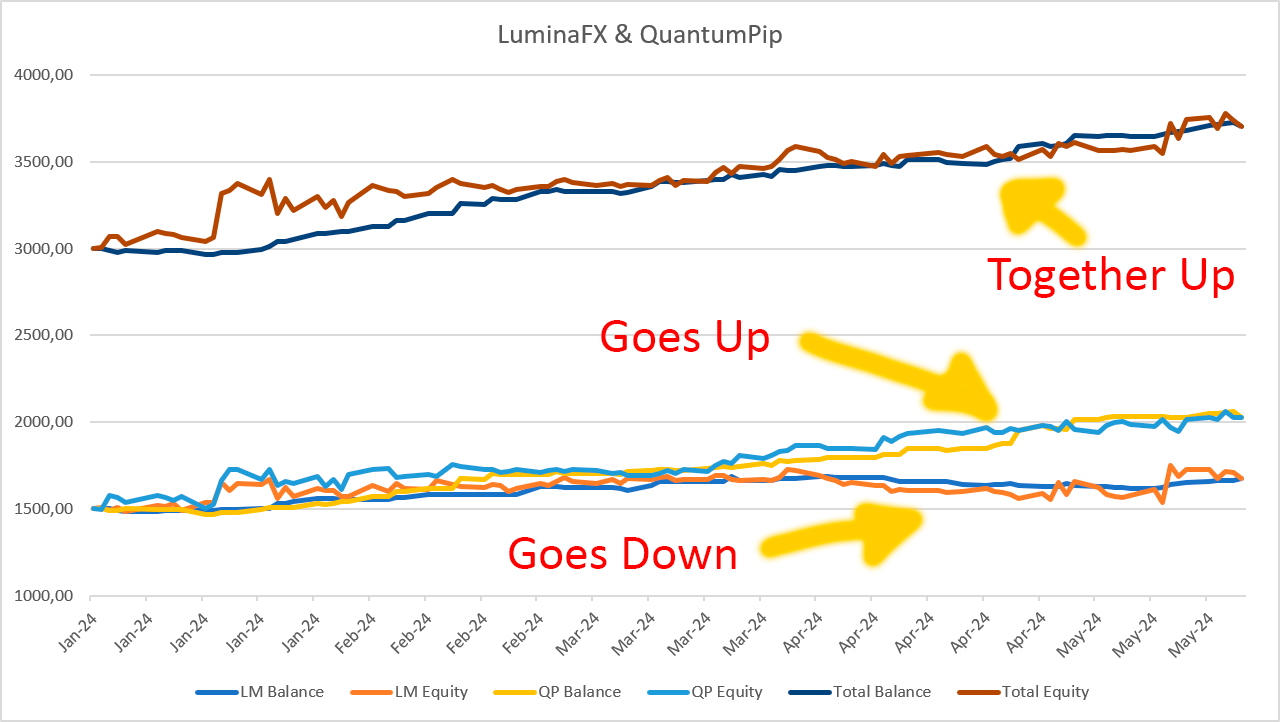
Советник QuantumPip ("КвантумПип") - это полностью автоматический советник, который умеет торговать одновременно на 10 символах: AUDCAD, AUDUSD, EURUSD, GPBCAD, GBPCHF, GBPUSD, NZDUSD, USDCAD, USDCHF и USDJPY. Советник также использует цены золота для расчета входов по этим символам. Советник использует два вида рекуррентной нейронной модели - односетевую (решения "бай" или "селл") и двухсетевую (решения "бай" или неопределенность и "селл" или неопределенность). Таким образом, советник
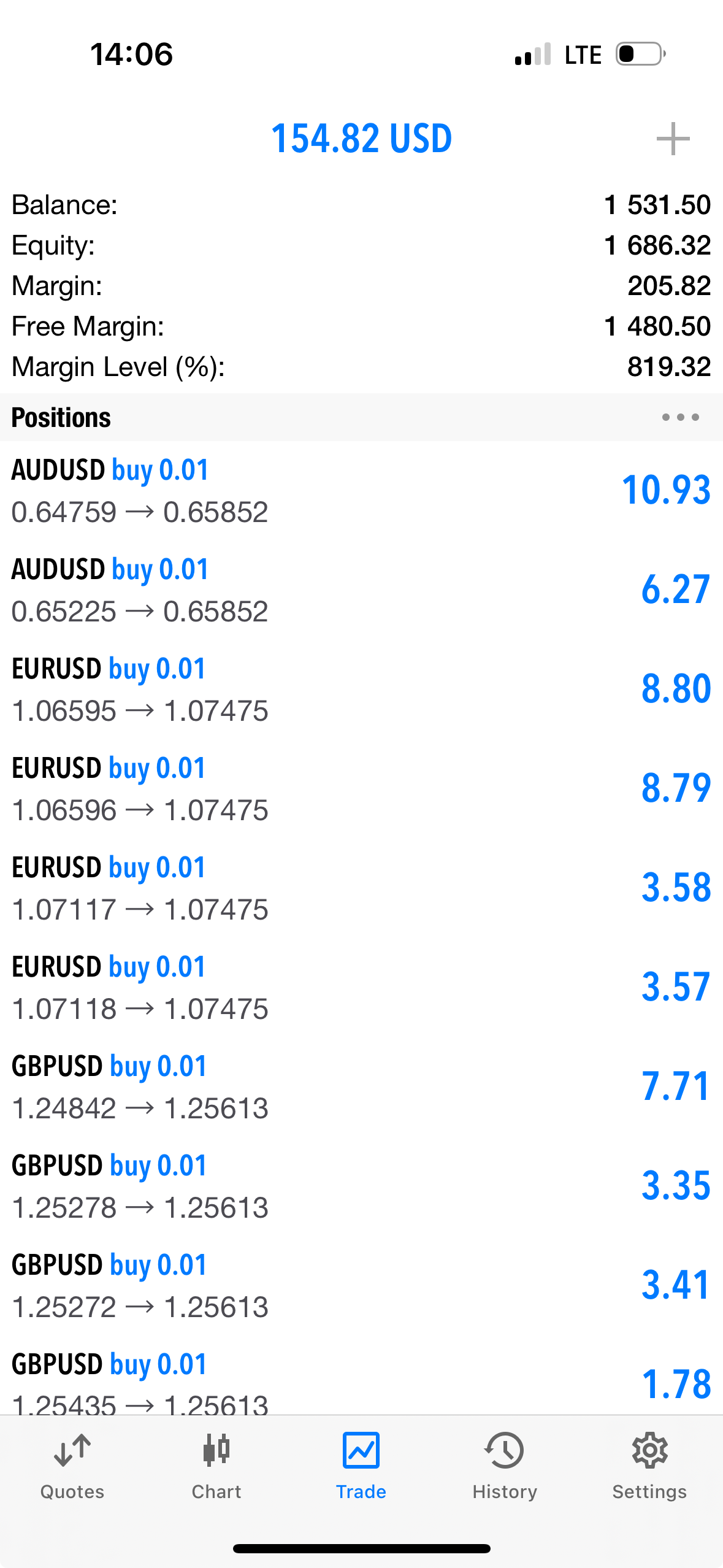
The thing is QuantumPip, which is my most advanced system so far, still shows better results. I can't make LuminaFX outperform QuantumPip. But I will keep on searching. I think if the past has the same random prices as the future does, a good strategy should be able to pass the history with a satisfactory result. LuminaFX struggles to do it. Do I have to come to the conclusion that it is different: To be able to pass the random prices of the future, a good strategy should not fit to the prices of the past at all???
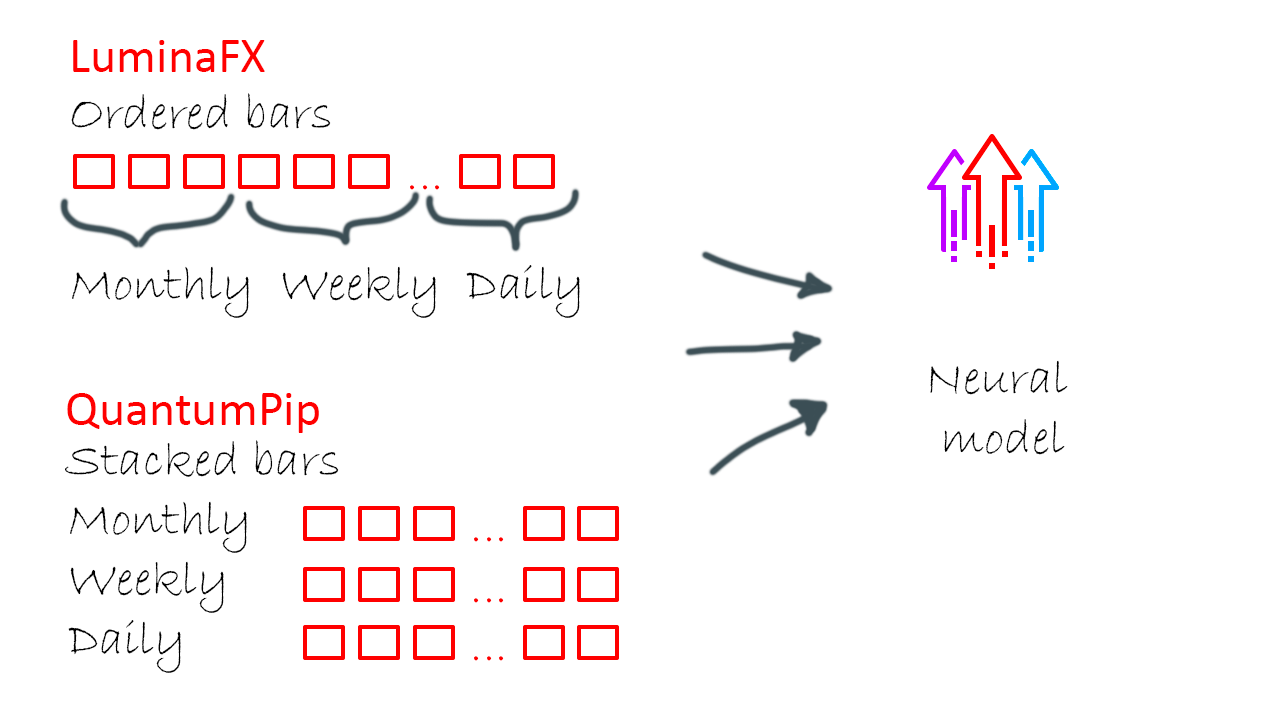
IDixie - это индикатор, показывающий значения открытия и закрытия индекса американского доллара DXY или "Дикси". Индикатор рассчитывается из взвешенных значений 6 основных символов: EURUSD, USDJPY, GBPUSD, USDCAD, USDSEK и USDCHF. Помимо значений "Дикси", индикатор также показывает скользящую среднюю. Вы можете задать период скользящей средней. Когда бары индикатора пробивают скользящую среднюю, это создает хорошие сигналы для входа в рынок. Как правило, сигналы индикатора надежнее, чем похожие
Индикатор IQuantum показывает торговые сигналы по 10 символам на дневном графике: AUDCAD, AUDUSD, EURUSD, GBPCAD, GBPCHF, GBPUSD, NZDUSD, USDCAD, USDCHF и USDJPY. Сигналы индикатора генерируются двумя нейронными моделями, которые были обучены независимо друг от друга. В качестве входов для нейронных моделей используются нормализованные цены символов, а также золота, серебра и указатели текущего дня. Каждая нейронная модель была обучена в двух вариантах. Максимальный режим (Ultimate) представляет




